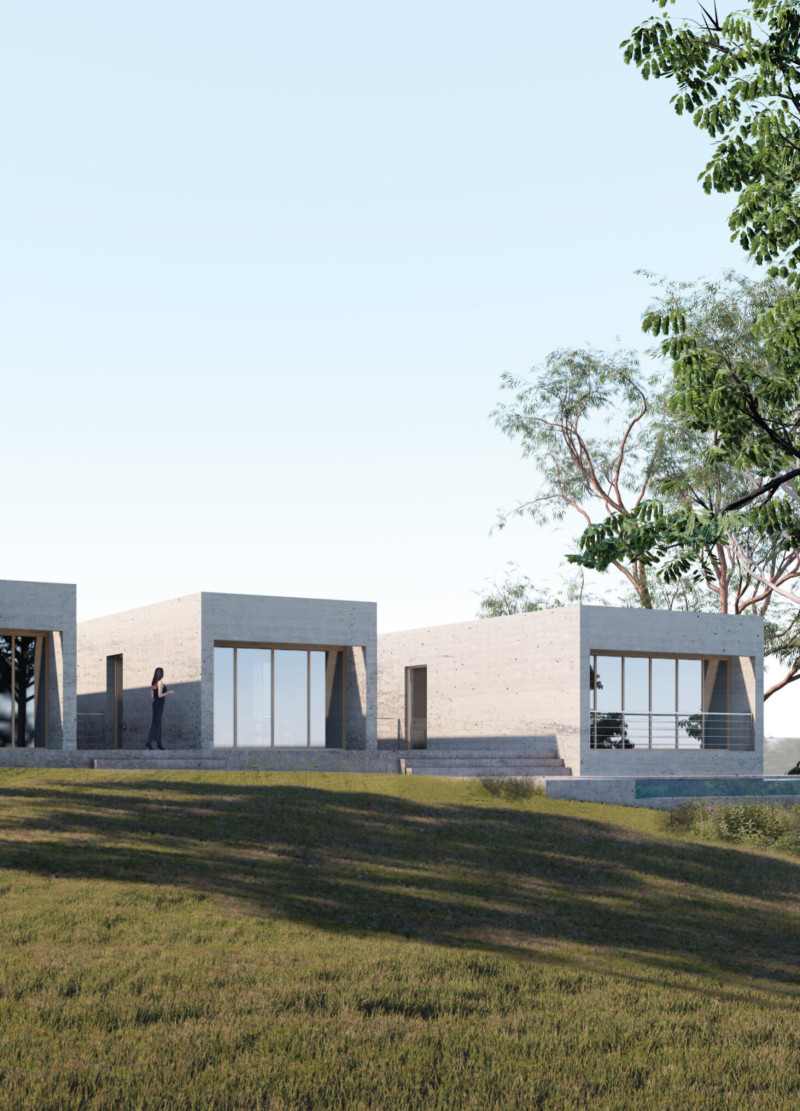5 key facts about this project
The primary function of the building revolves around [insert primary functions, e.g., residential, commercial, or community spaces], designed to accommodate the needs of its users. The layout facilitates a seamless flow between various areas, ensuring that each space is utilized effectively. Common areas encourage social interaction, while private zones offer residents a retreat, highlighting a balanced approach to public and private life.
Important elements of the project include [describe significant architectural features, such as courtyards, terraces, or pathways]. These features not only enhance the building's visual appeal but also improve user experience by creating inviting spaces that promote relaxation and community bonding. For instance, the incorporation of [specific materials or elements, e.g., large windows, balconies, or open-air corridors] allows for an abundance of natural light and ventilation, contributing to the overall energy efficiency of the design.
The careful selection of materials underpins the architectural identity of the project. A combination of reinforced concrete, sustainably sourced wood, and low-emissivity glass work together to create a striking yet harmonious façade. Each material has been chosen not only for its aesthetic properties but also for its performance – factors such as durability, maintenance, and environmental impact have all been carefully considered. The sustainable choices made in this project underscore a commitment to reducing carbon footprints while enhancing the occupants' quality of life.
Unique design approaches are evident throughout the project. One notable aspect is the integration of green building practices, such as the implementation of rainwater harvesting systems and the use of green roofs. These features not only promote environmental sustainability but also create habitats that encourage biodiversity in urban settings. Additionally, the design incorporates passive solar principles, maximizing sunlight to reduce reliance on artificial lighting and heating.
Architectural elements, such as overhangs and shading devices, are thoughtfully placed to mitigate heat gain during warmer months, demonstrating a responsive approach to local climate conditions. This attention to detail not only improves occupant comfort but also aligns with broader environmental goals.
Furthermore, the project stands out due to its contextual sensitivity. By incorporating local cultural elements and indigenous materials wherever possible, the design resonates with the community's identity, fostering a sense of pride and ownership among its users. This project speaks to the idea that architecture is not just about buildings but also about the lives that unfold within them.
For those interested in exploring this project further, delving into the architectural plans and sections can provide greater insight into the design’s intricacies. Examining the architectural designs and corresponding ideas that influenced the layout and features can help uncover the thought processes that guided the project’s development. The details embedded within the designs reflect a careful consideration of functionality, aesthetics, and environmental consciousness. By engaging with these materials, the reader can appreciate the depth and rigor involved in the realization of this architecture project.


























